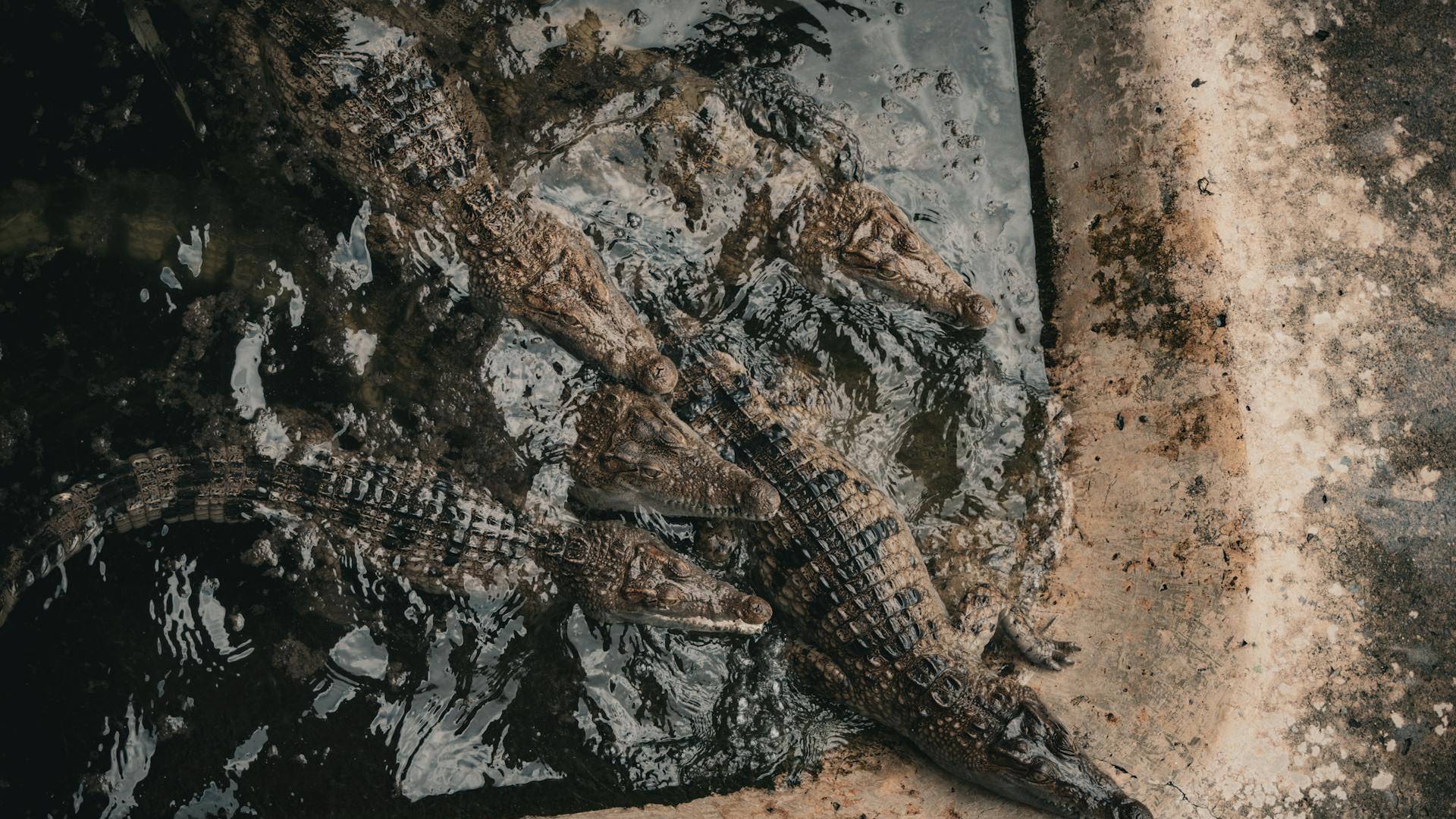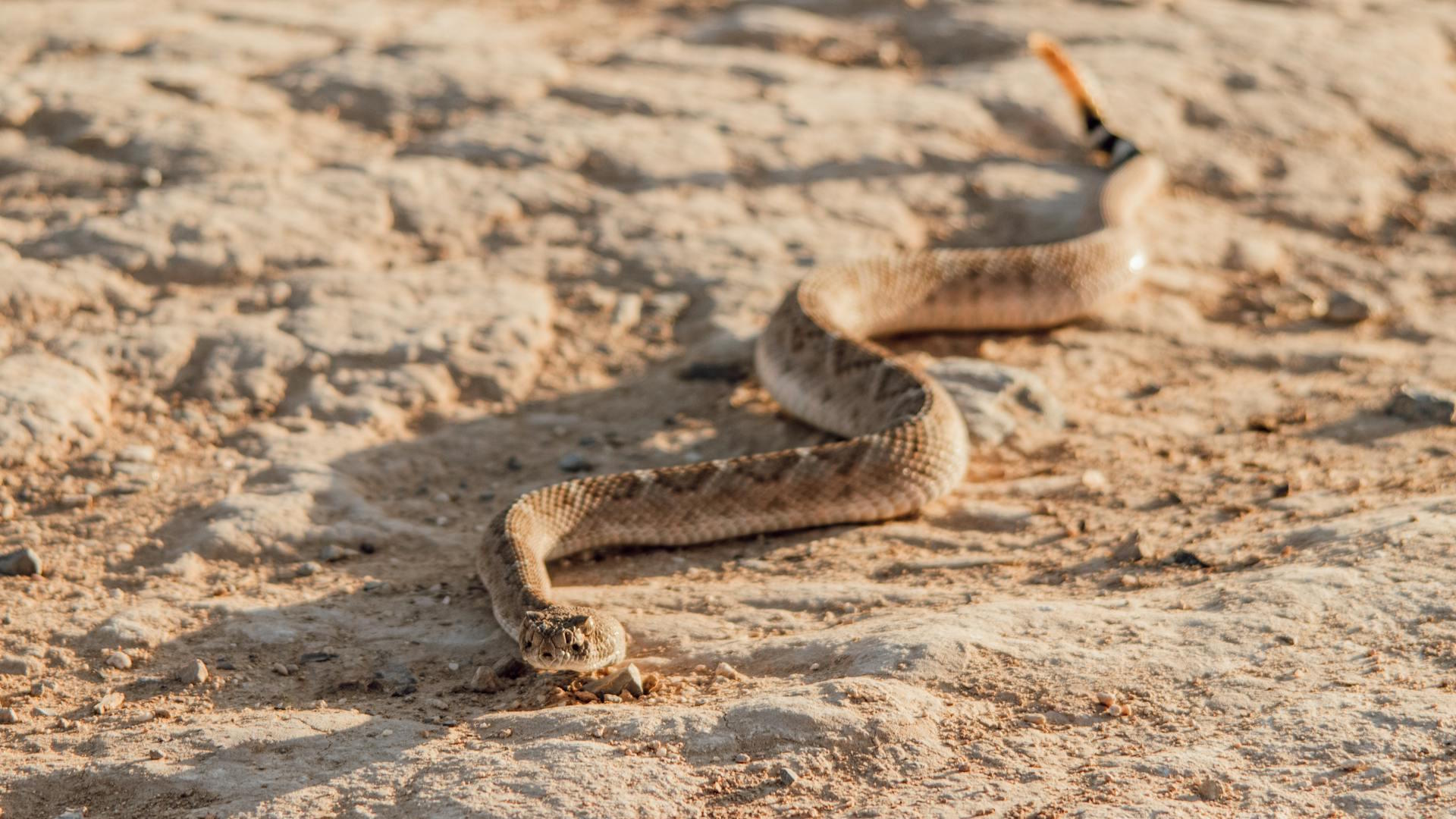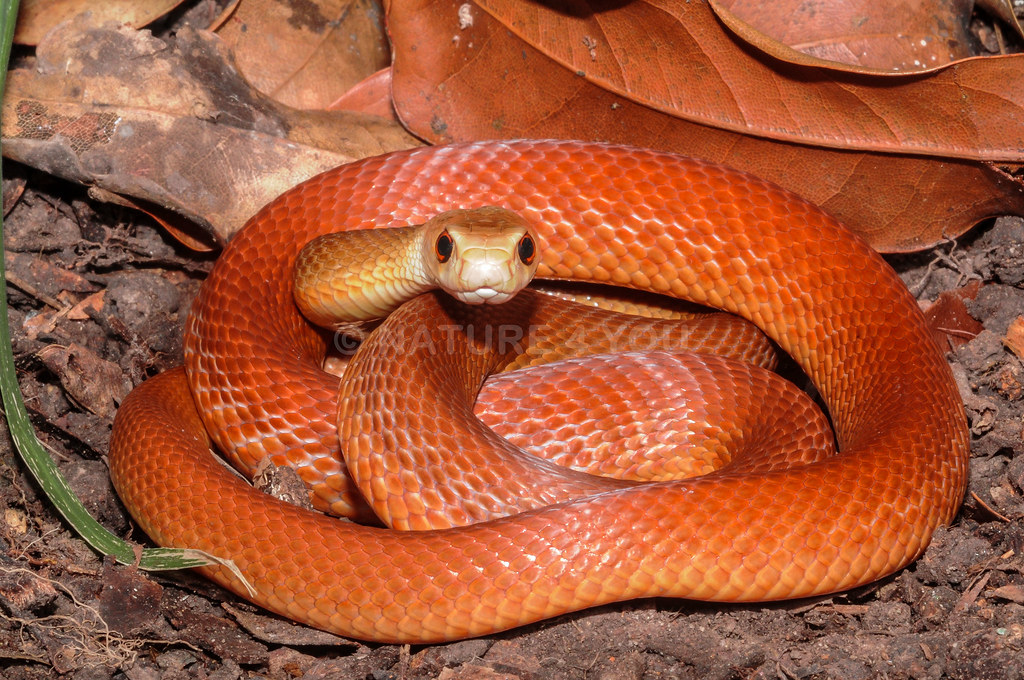In the murky depths of rivers and swamps, crocodiles have mastered the art of hunting without relying on vision. These ancient predators, having evolved over millions of years, possess remarkable adaptations that allow them to detect, track, and capture prey even in pitch-black conditions. Unlike most predators that depend heavily on eyesight, crocodiles employ a sophisticated arsenal of sensory tools that make them lethal hunters regardless of lighting conditions. From specialized skin sensors to unique cranial adaptations, these reptiles showcase nature’s ingenuity in solving the challenge of nocturnal hunting. Their ability to operate effectively in darkness has contributed significantly to their evolutionary success and their reputation as one of the planet’s most efficient predators.
The Evolutionary Advantage of Nocturnal Hunting

Crocodiles have evolved as ambush predators, and darkness provides them with the perfect cover for their hunting strategy. By developing mechanisms to hunt efficiently at night, crocodiles gain access to prey that might otherwise be vigilant during daylight hours. This evolutionary adaptation has allowed crocodiles to minimize competition with other predators that rely primarily on vision for hunting. Additionally, many potential prey animals are more active at night, providing crocodiles with increased hunting opportunities during these hours. The ability to hunt in darkness has proven so advantageous that it has remained a key feature of crocodilian biology for millions of years, contributing to their status as living fossils largely unchanged since the time of dinosaurs.
Dome Pressure Receptors: Nature’s Underwater Radar
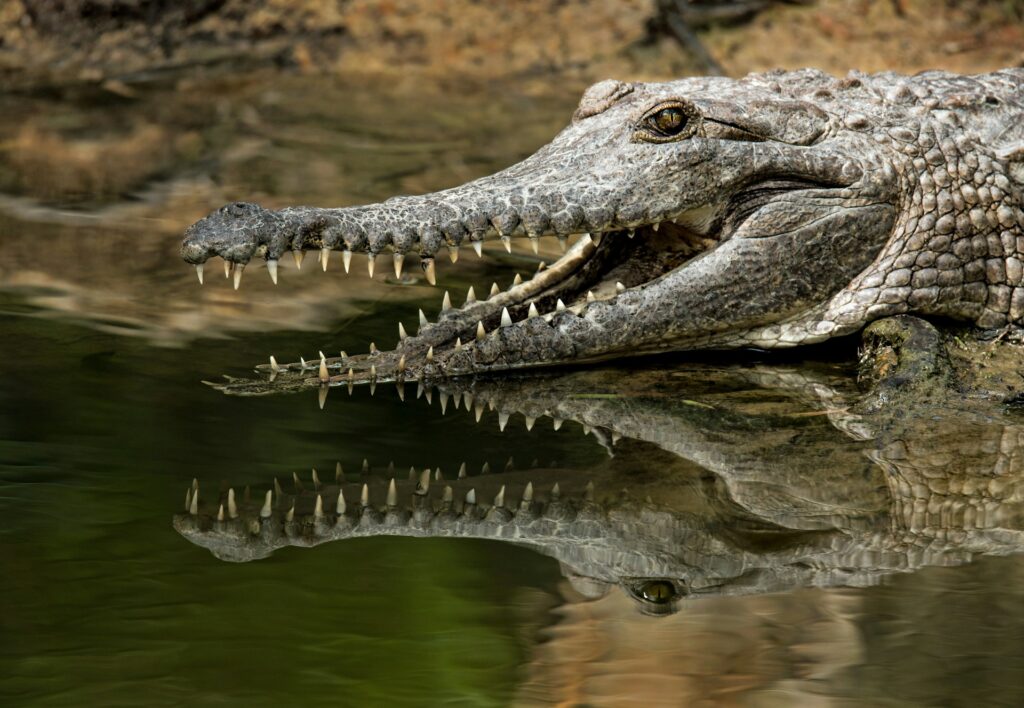
Perhaps the most fascinating adaptation that enables crocodiles to hunt in complete darkness is their system of Dome Pressure Receptors (DPRs), tiny sensory organs dotting their skin. These specialized structures appear as small, pigmented domes visible on the scales around the crocodile’s face and jaws. Each receptor contains mechanoreceptors that can detect minute changes in water pressure caused by moving objects. When prey disturbs the water’s surface or creates subtle currents underwater, these receptors immediately detect the disturbance, allowing the crocodile to pinpoint the prey’s location without seeing it. The sensitivity of these receptors is so remarkable that crocodiles can detect a single drop of water falling onto a water surface several meters away, essentially giving them a form of “touch at a distance” capability that functions regardless of lighting conditions.
The Incredible Sensitivity of Integumentary Sense Organs

Complementing their dome pressure receptors, crocodiles possess Integumentary Sense Organs (ISOs) that further enhance their ability to hunt in darkness. These sensory organs are concentrated primarily around the crocodile’s jaws and face but can be found across their entire body. Scientists have discovered that these organs are among the most sensitive touch receptors in the animal kingdom, capable of detecting vibrations smaller than those the human fingertip can perceive. In laboratory studies, blindfolded crocodiles equipped with earplugs could still accurately strike at objects touching the water surface, demonstrating the remarkable effectiveness of these sense organs. The information from thousands of these sensors is integrated in the crocodile’s brain, creating a detailed “pressure map” of their surroundings that substitutes for visual information in dark environments.
Night Vision Capabilities Beyond Human Comprehension
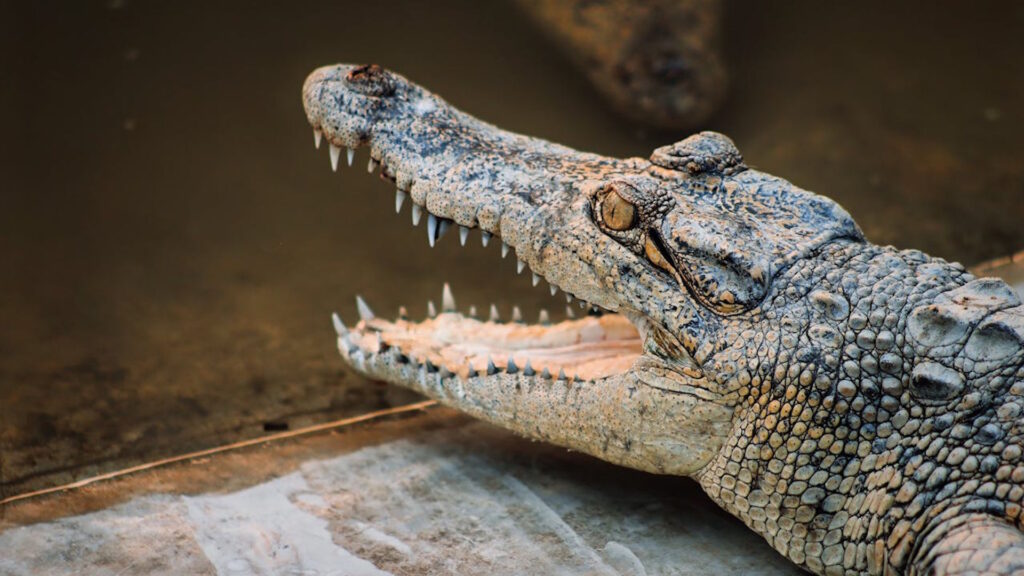
While crocodiles primarily rely on non-visual senses for hunting in darkness, they also possess enhanced night vision that supplements their other sensory systems. Their eyes feature a specialized structure called the tapetum lucidum, a reflective layer behind the retina that increases light sensitivity by reflecting light back through the retina a second time. This adaptation allows crocodiles to make maximum use of even minimal available light, such as moonlight or starlight reflected on water surfaces. Additionally, their vertical slit pupils can open extremely wide in low light conditions, gathering more light than would be possible with round pupils. Researchers have estimated that crocodile night vision is approximately 20 times more sensitive than human vision in low-light conditions, though they still rely primarily on their pressure sensors when hunting in complete darkness.
The Role of Sound in Underwater Hunting
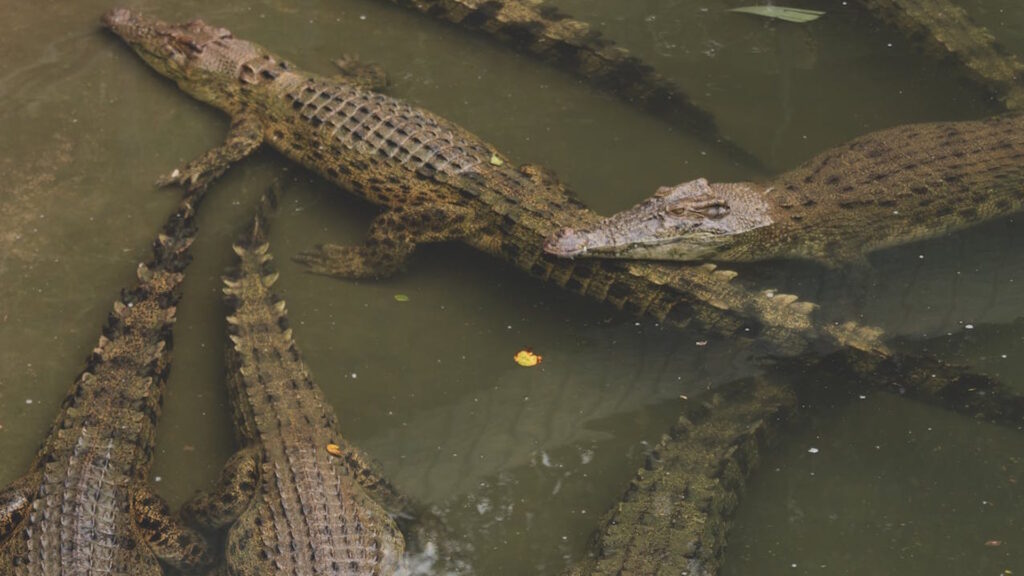
Sound travels approximately four times faster in water than in air, and crocodiles have evolved to exploit this physical property when hunting in darkness. Their ears contain specialized valves that close when submerged, protecting the eardrum while still allowing the detection of underwater sounds through bone conduction. Crocodiles can detect low-frequency sounds and vibrations from struggling prey at considerable distances, which helps them locate potential meals in dark waters. Interestingly, female crocodiles use this same sensitivity to sound to detect the calls of their hatchlings from inside unhatched eggs or when the young are in distress. This auditory acuity complements their other sensory systems, creating a multi-layered approach to detecting prey that functions effectively regardless of visibility conditions.
Chemical Detection Through an Advanced Olfactory System

Crocodiles possess a remarkably sophisticated sense of smell that contributes significantly to their ability to hunt in darkness. Their nostrils can close underwater, but when they surface, they can detect airborne scents that may indicate the presence of prey. More impressively, crocodiles have specialized olfactory regions in their brains that process chemical information received through both their nostrils and palatal sense organs. These palatal organs, located on the roof of the mouth, allow crocodiles to “taste” the water, detecting chemical signatures left by prey animals. Studies have shown that crocodiles can detect blood and other prey-associated chemicals in water at concentrations as low as a few parts per million. In complete darkness, this chemical detection ability helps crocodiles determine not only the presence of prey but potentially its type, size, and direction of movement.
Brain Specialization for Sensory Integration
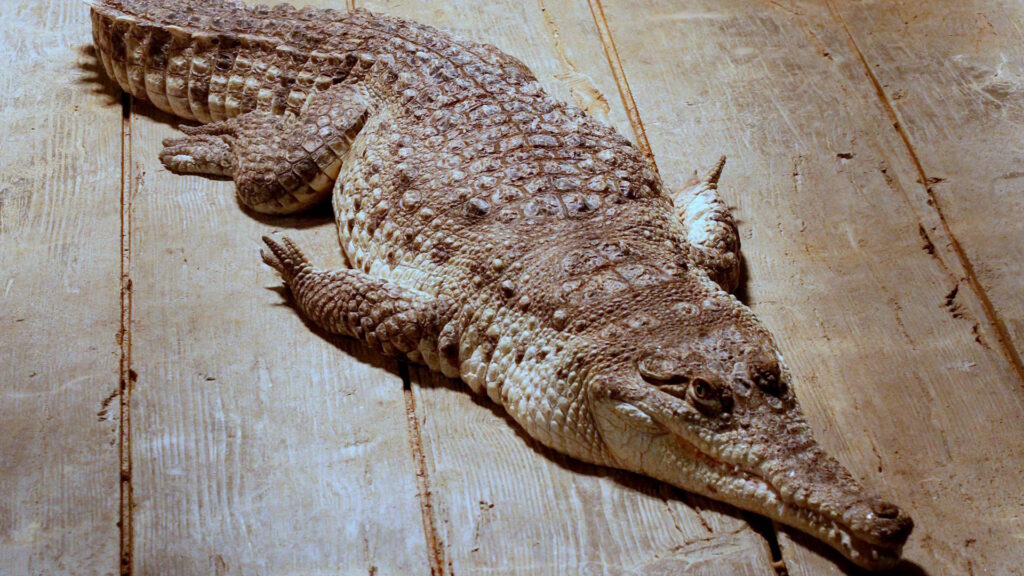
The crocodilian brain has evolved specialized regions for processing and integrating the wealth of non-visual sensory information they receive when hunting in darkness. Their cerebellum, the brain region responsible for coordinating sensory perception and movement, is proportionally larger than in many other reptiles. Neurological studies have revealed that crocodiles possess dedicated neural pathways that rapidly process information from their pressure receptors, allowing for near-instantaneous hunting responses. The medulla oblongata, which processes sensory information from the face and jaws, is particularly well-developed in crocodiles. This neural specialization enables crocodiles to create a comprehensive mental map of their surroundings based entirely on non-visual cues, a remarkable adaptation that allows them to function as apex predators even in environments of complete darkness.
The Deadly Accuracy of Blind Strikes
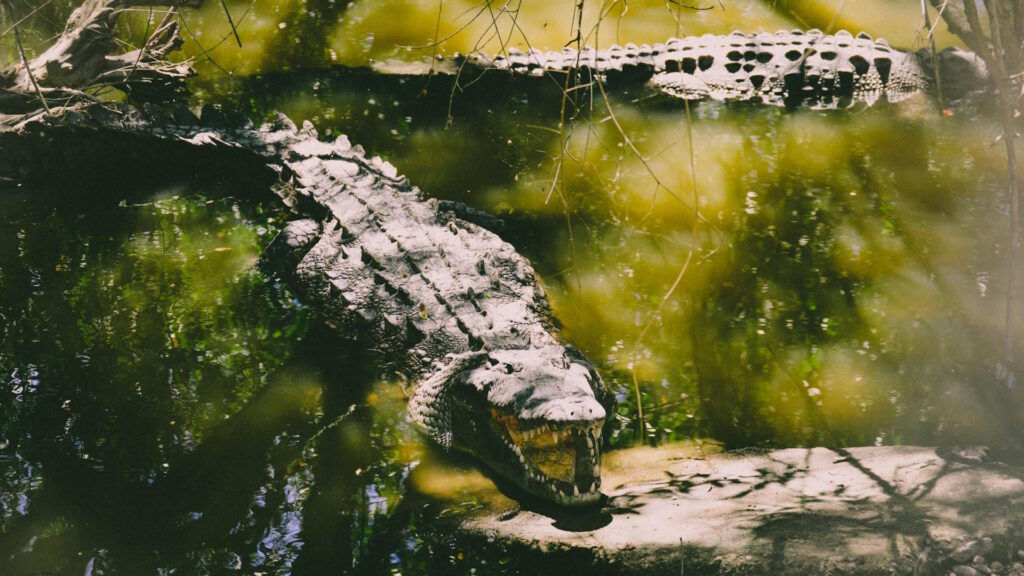
The combination of specialized sensory systems allows crocodiles to execute hunting strikes with astonishing accuracy even in total darkness. When a crocodile detects prey through pressure changes or vibrations, it can launch a precisely targeted attack without visual confirmation of the target. High-speed camera recordings have shown that these blind strikes can be accurate to within centimeters, demonstrating the remarkable precision of their non-visual hunting system. Once prey is detected, crocodiles can accelerate their massive bodies with explosive speed, often catching victims completely unaware. Research has shown that success rates for nocturnal hunts are comparable to daytime hunting success, indicating that darkness poses no significant disadvantage to these ancient predators.
Different Hunting Strategies Across Crocodile Species

While all crocodilians possess adaptations for hunting in darkness, different species have evolved variations in their approach. Saltwater crocodiles (Crocodylus porosus), the largest living reptiles, are particularly adept at hunting in murky coastal waters where visibility is extremely limited. American alligators (Alligator mississippiensis) often hunt in swamps and marshes where tannic acid from decomposing vegetation creates naturally dark water, and they’ve developed enhanced sensitivity in their facial pressure receptors. The gharial (Gavialis gangeticus), with its distinctive thin snout, specializes in detecting the pressure waves of fish moving in dark river waters. Nile crocodiles (Crocodylus niloticus) frequently hunt during twilight hours at river crossings, using their sensory adaptations to detect large mammals entering the water even when visibility is poor.
The Importance of Stealth and Patience

Hunting in darkness enhances the crocodile’s natural stealth advantage as an ambush predator. Even when using their highly sensitive pressure detection systems, crocodiles typically employ a patient, wait-and-strike approach rather than active pursuit. A hunting crocodile may remain motionless for hours, floating with only its eyes, nostrils, and the top of its head breaking the water’s surface. This patience is particularly valuable in dark conditions, where prey animals may be less vigilant about predator detection. Crocodiles will often position themselves strategically near game trails or drinking spots, using their sensory systems to detect approaching prey long before visual contact would be possible. This combination of sensory adaptation and behavioral patience makes crocodiles particularly effective nocturnal hunters.
Juveniles and Learning to Hunt in Darkness

Young crocodiles face significant challenges as they develop their hunting skills, especially when learning to operate in darkness. Juvenile crocodiles possess the same sensory organs as adults, but they must learn through experience how to interpret and respond to the information these organs provide. Research has shown that young crocodiles initially make more hunting attempts with lower success rates than adults, gradually improving as they refine their skills. Interestingly, juvenile crocodiles often hunt smaller prey than adults, which may provide them with opportunities to practice their sensory-guided striking technique with less dangerous targets. Scientists have observed that juvenile success rates when hunting in darkness improve significantly during their first two years of life, suggesting a combination of biological development and experiential learning.
Environmental Challenges to Dark-Water Hunting
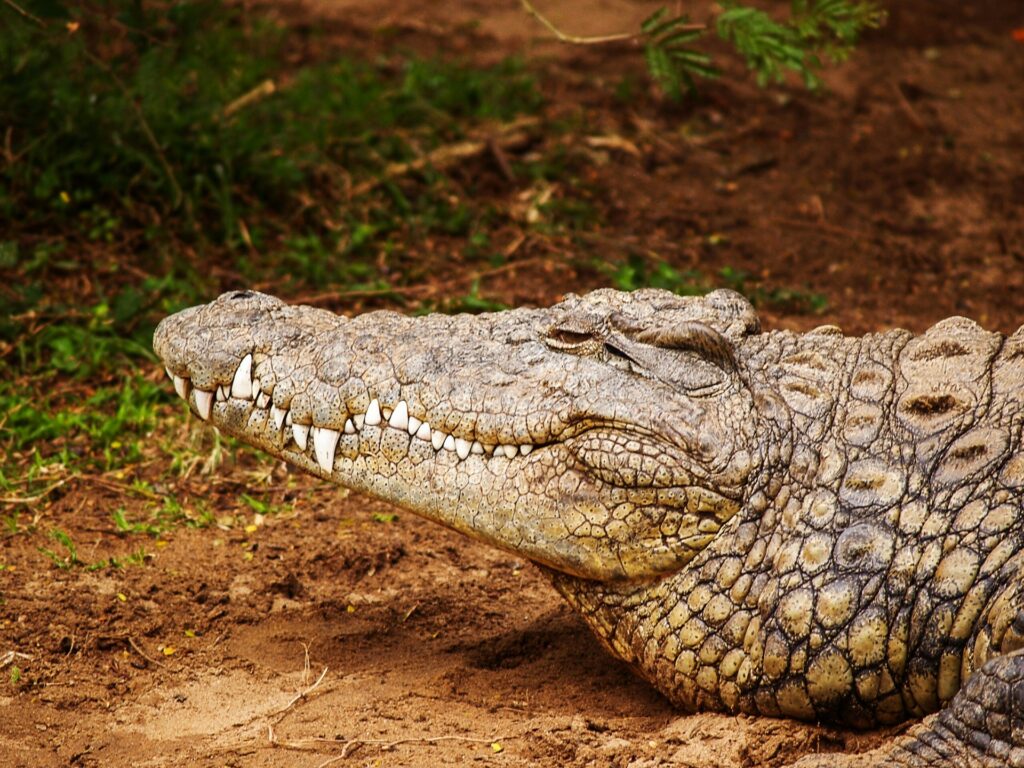
Despite their remarkable adaptations, crocodiles face environmental challenges that can interfere with their ability to hunt in darkness. Excessive water turbulence from storms or flooding can create background “noise” that makes it difficult for crocodiles to distinguish the subtle pressure changes caused by prey. Water pollution, particularly from industrial sources, can damage the sensitive receptors crocodiles rely on for detecting prey. Climate change poses another threat, as warming waters typically carry less dissolved oxygen, potentially altering the behavior of prey species and forcing crocodiles to adapt their hunting strategies. Additionally, human activities such as boat traffic can create disturbances that interfere with the crocodile’s sensitive detection systems, potentially reducing their hunting efficiency in areas frequented by humans.
Applications in Science and Technology
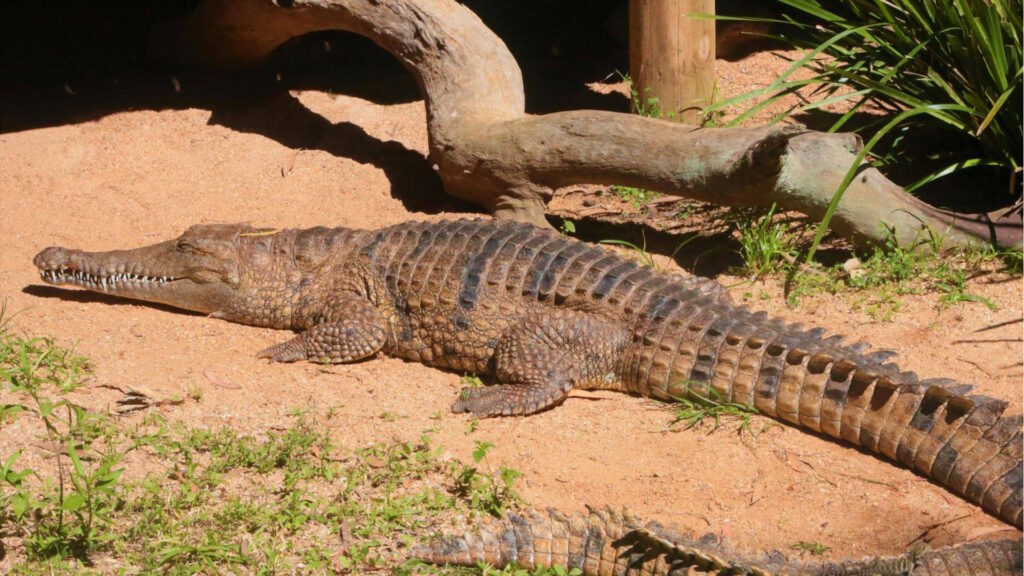
The remarkable sensory adaptations that allow crocodiles to hunt in darkness have inspired scientists and engineers to develop biomimetic technologies. Researchers have studied the structure and function of crocodilian pressure receptors to design underwater pressure sensors for detecting subtle movements and disturbances in aquatic environments. Military applications include the development of submarine detection systems based on principles similar to how crocodiles detect prey through water pressure changes. In robotics, engineers have incorporated crocodile-inspired sensory systems into autonomous underwater vehicles designed to navigate and function in low-visibility environments. Conservation biologists have also applied knowledge of crocodilian sensory systems to develop more effective monitoring techniques for studying these elusive predators in their natural habitats, particularly during their nocturnal activities.
Conclusion
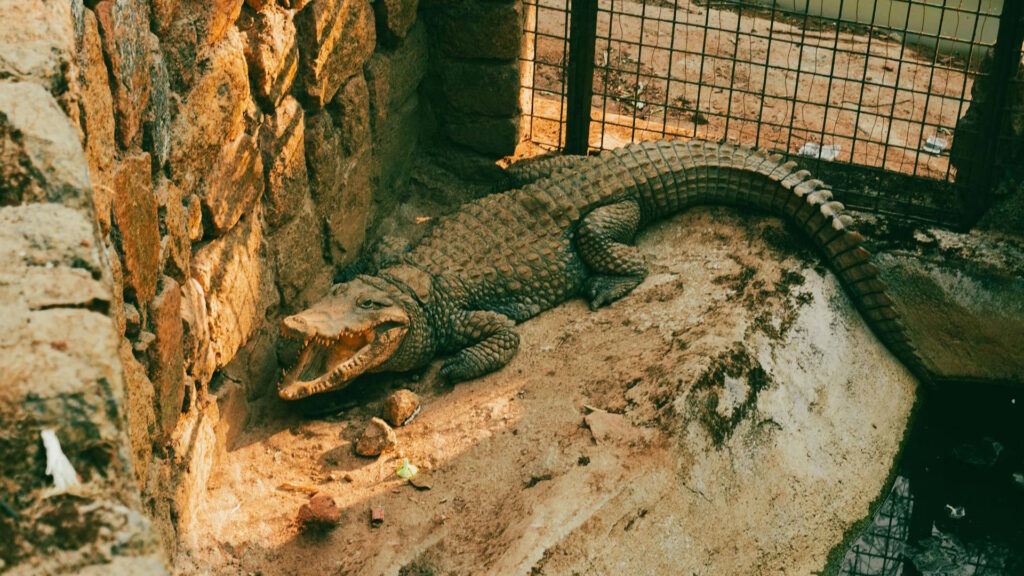
The ability of crocodiles to hunt effectively in complete darkness represents one of nature’s most impressive sensory adaptations. Through millions of years of evolution, these ancient reptiles have developed a sophisticated suite of non-visual hunting tools that allow them to detect, track, and capture prey regardless of lighting conditions. From their remarkable pressure-sensitive skin receptors to specialized brain structures that process this sensory information, crocodiles demonstrate that successful predation doesn’t necessarily depend on vision. As we continue to study these fascinating creatures, we gain not only greater appreciation for their evolutionary success but also inspiration for technological innovations based on their unique sensory capabilities. In the eternal evolutionary arms race between predator and prey, the crocodile’s ability to hunt in darkness remains one of nature’s most effective adaptations.

